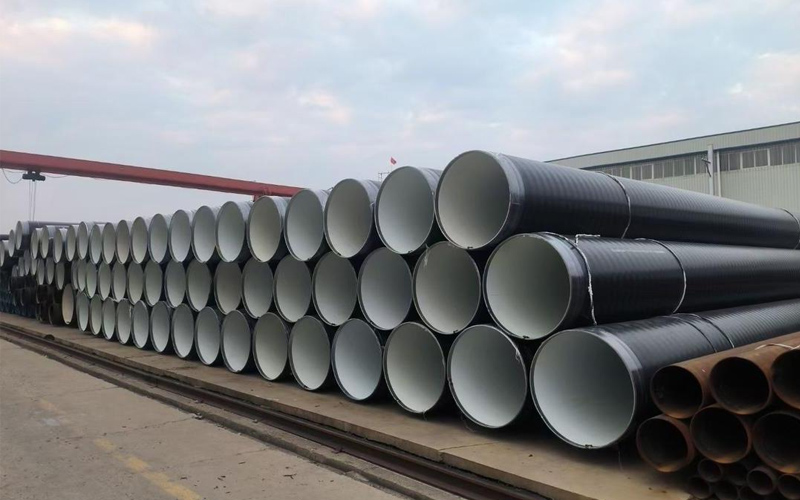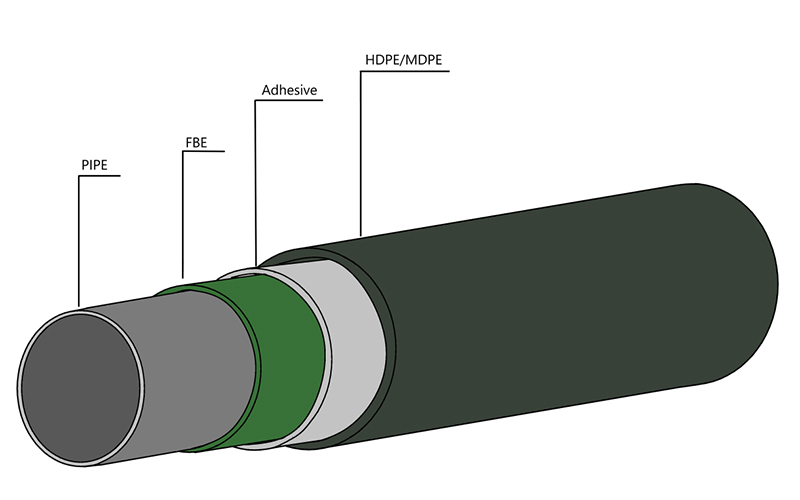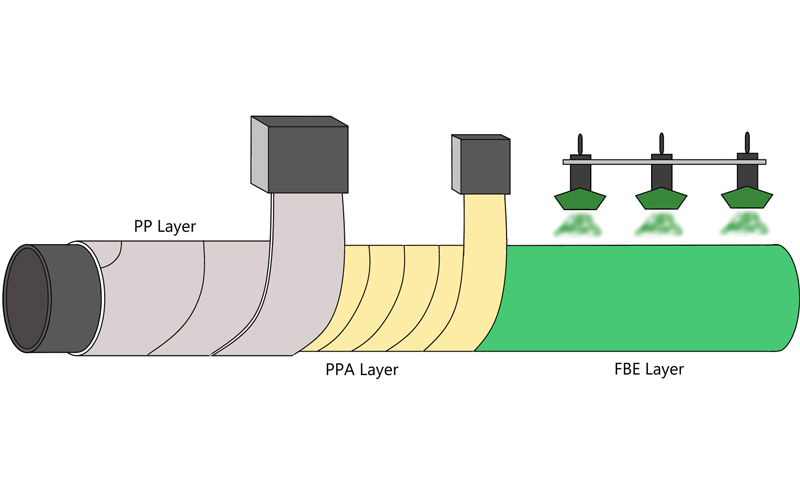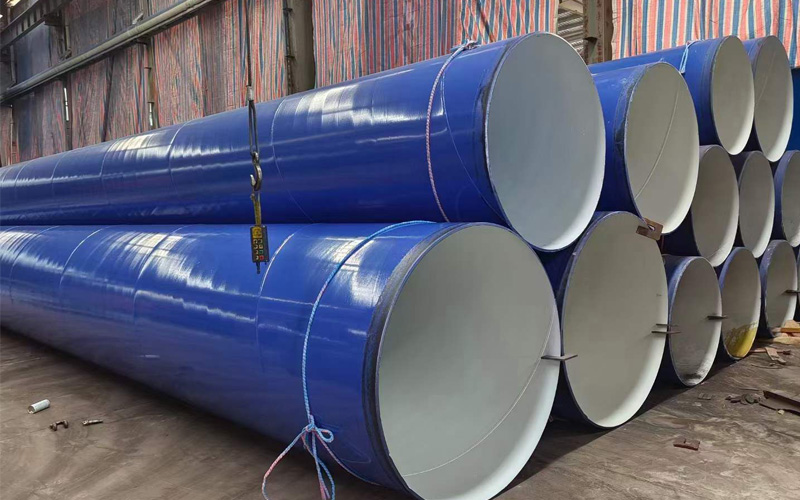What is offshore pipeline and its Applications in offshore oil and gas development
Brief introduction
The offshore oil and gas industry relies heavily on advanced infrastructure to transport crude oil, natural gas and other hydrocarbons from offshore oil wells to processing facilities. One of the most important components in this supply chain is the offshore pipeline. API 5L offshore pipeline is designed to operate under extreme ocean conditions, ensuring the safe, efficient and long-term transportation of resources from offshore oil fields to onshore facilities or floating production devices.
With the continuous expansion of deep water and ultra-deep water exploration-the water depths can exceed 1,500 meters-the demand for high-quality, corrosion-resistant and pressure-resistant offshore pipelines has increased greatly.
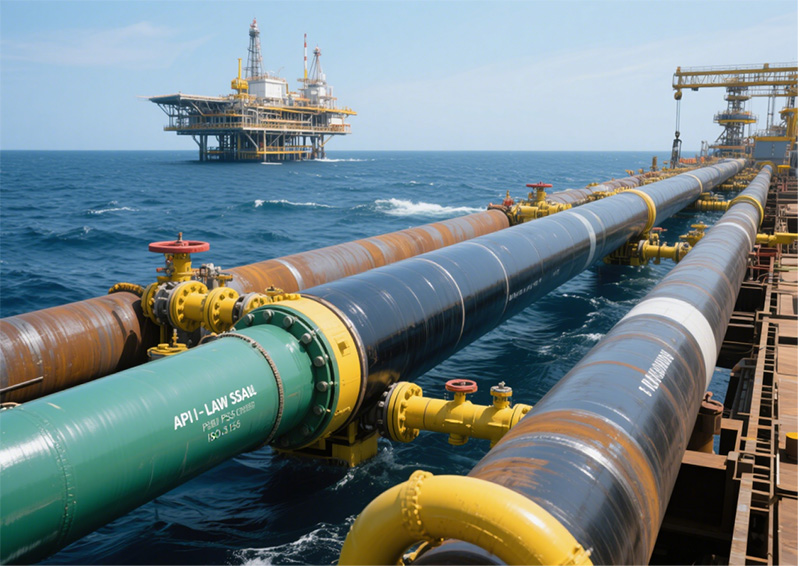
What is the offshore pipeline?
An offshore pipeline is a kind of submarine steel pipe system, which is specially designed to transport oil and gas in the marine environment for a long distances. The most commonly used manufacturing methods include LSAW steel pipe (longitudinal submerged arc welding) and SSAW steel pipe (spiral submerged arc welding).
The construction of these pipelines conforms to API 5L PSL2 standards issued by american petroleum institute, which is a mandatory standard for offshore pipeline projects. Their design also conforms to ISO 3183 and other international certifications to ensure quality, safety and environmental protection.
Main technical Specifications
·!– /wp:paragraph –>
Applications of offshore oil and natural gas.
The main application for offshore pipelines is in the field of oil and gas exploration and production (e&p), accounting for about 85% of total demand.
Typical applications include:
1. Subsea Export Pipelines–Transporting crude oil or natural gas from offshore production wells to onshore facilities.
2. Flowline-Connect the underwater wellhead to manifolds and processing platforms.
3. Injection pipeline –transporting water or gas back to the reservoirs to improve oil recovery (EOR).
4. Gas Gathering Systems–Collecting associated gas from multiple wells and transporting it to processing plants.
Case study: deepwater gas field development
A large national oil company planned to develop a deepwater gas field more than 1,500 meters below the sea level. This project faced three major challenges:
1. Extreme Depth and External Pressure–Required a pipeline capable of withstanding immense hydrostatic forces.
2. Corrosive environment-high concentration of hydrogen sulfide and carbon dioxide need advanced corrosion protection.
3. Low-Temperature Operation–Arctic-level water temperatures increased the risk of material brittleness.
solution:
The engineering team chose an API 5L offshore pipeline, which is made of high-grade LSAW steel pipe and the anti-corrosion coating meets DNV standards. The design integrated thermal insulation to prevent hydrate formation, ensuring uninterrupted gas flow.
achievements:
Excellent dimensional accuracy and welding performance have improved the efficiency of offshore pipe laying operations by approximately 15%, saving customers valuable operating time and costs.Although the initial procurement cost was higher than standard API-grade pipelines, the service life of the new pipeline system has been extended for more than 30 years with minimal maintenance, and the long-term return on investment has been improved by reducing replacement and shutdown costs.
Advantages over Competitors
1. Excellent durability-The manufacturing processes of – LSAW and SSAW ensure higher welding strength and consistency.
2. Lower Lifecycle Costs–Enhanced corrosion resistance reduces maintenance and replacement frequency.
3. Conforming to international standards – conforming to API 5L PSL 2, DNV and ISO 3183, which provides a guarantee for global offshore projects.
Conclusion
As the development of offshore oil and gas industry to deeper waters and worse environment, the demand for high-performance API 5L offshore pipelines will continue to rise. With advanced engineering technology, strict quality control and proven performance in challenging conditions, offshore pipelines will continue to be the cornerstone of global energy transport infrastructure.
·!– /wp:paragraph –>
· Grade: Compliant with API 5L standards, ranging from X52 to X80 grades, with particular emphasis on high-strength, high-toughness grades such as X65, X70, and X80.
· Diameter Range: it can be customized according to project requirements, and has the option of large outer diameter for long-distance transmission.
· Pressure Resistance: it is designed for deep water environment with external hydrostatic pressures exceeding 15 MPa.
· Temperature Range: -40 degrees Celsius to 120 degrees.
·!– /wp:paragraph –>
Applications of offshore oil and natural gas.
The main application for offshore pipelines is in the field of oil and gas exploration and production (e&p), accounting for about 85% of total demand.
Typical applications include:
1. Subsea Export Pipelines–Transporting crude oil or natural gas from offshore production wells to onshore facilities.
2. Flowline-Connect the underwater wellhead to manifolds and processing platforms.
3. Injection pipeline –transporting water or gas back to the reservoirs to improve oil recovery (EOR).
4. Gas Gathering Systems–Collecting associated gas from multiple wells and transporting it to processing plants.
Case study: deepwater gas field development
A large national oil company planned to develop a deepwater gas field more than 1,500 meters below the sea level. This project faced three major challenges:
1. Extreme Depth and External Pressure–Required a pipeline capable of withstanding immense hydrostatic forces.
2. Corrosive environment-high concentration of hydrogen sulfide and carbon dioxide need advanced corrosion protection.
3. Low-Temperature Operation–Arctic-level water temperatures increased the risk of material brittleness.
solution:
The engineering team chose an API 5L offshore pipeline, which is made of high-grade LSAW steel pipe and the anti-corrosion coating meets DNV standards. The design integrated thermal insulation to prevent hydrate formation, ensuring uninterrupted gas flow.
achievements:
Excellent dimensional accuracy and welding performance have improved the efficiency of offshore pipe laying operations by approximately 15%, saving customers valuable operating time and costs.Although the initial procurement cost was higher than standard API-grade pipelines, the service life of the new pipeline system has been extended for more than 30 years with minimal maintenance, and the long-term return on investment has been improved by reducing replacement and shutdown costs.
Advantages over Competitors
1. Excellent durability-The manufacturing processes of – LSAW and SSAW ensure higher welding strength and consistency.
2. Lower Lifecycle Costs–Enhanced corrosion resistance reduces maintenance and replacement frequency.
3. Conforming to international standards – conforming to API 5L PSL 2, DNV and ISO 3183, which provides a guarantee for global offshore projects.
Conclusion
As the development of offshore oil and gas industry to deeper waters and worse environment, the demand for high-performance API 5L offshore pipelines will continue to rise. With advanced engineering technology, strict quality control and proven performance in challenging conditions, offshore pipelines will continue to be the cornerstone of global energy transport infrastructure.
Get Your Custom Steel Pipe Quote Today!
Provide us with your project details (like application, specifications, quantity). Our experienced team will respond with a tailored solution and competitive quote within 24 business hours.











